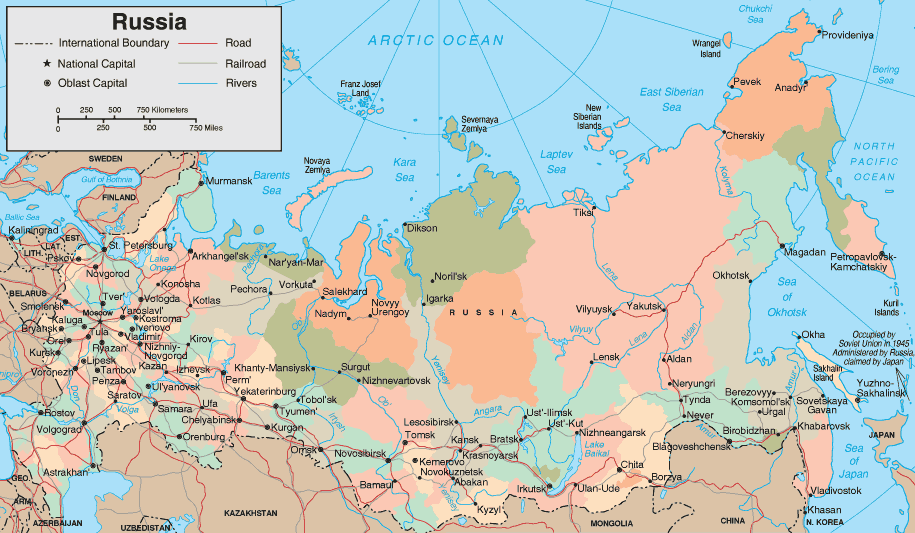
Sunday, November 23, 2008
BIG ENGINEERING 24 GREENING CENTRAL ASIA

Just as, back in the sixties, America had the ambition to build a massive water scheme to irrigate the West (see BE #23) so the USSR had had a scheme to reroute northern rivers to make the Central Asian region fertile.
The Northern river reversal or Siberian river reversal was a grand project to divert the flow of the Northern rivers in the Soviet Union, which drain into the Arctic Ocean, southwards, towards the populated agricultural areas of Central Asia, which lack water.
Consideration of plans for changing the direction of the Pechora, Kama, Tobol, Ishim, Irtysh, and Ob rivers resumed in the late 1960s. Some 120 institutes and agencies participated in the impact study coordinated by the Academy of Sciences; a dozen of conferences were held on the matter. The promoters of the project claimed that extra food production due to the availability of Siberian water for the irrigation in Central Asia could provide food for some 200,000,000 people.
The plans involved not only irrigation but also the replenishing of the shrinking Aral Sea and Caspian Sea.
In 1971, at a meeting of the International Atomic Energy Agency in Vienna the Soviets disclosed information about successful earthworks on the route of the Pechora-Kama Canal using detonations of three 15-kiloton nuclear devices spaced 500 feet apart, claiming negligible radioactive fallout.
With the breakup & collapse of the USSR & the increased influence worldwide of "environmentalists" this went into abeyance. The Aral sea has now shrunk to pitiful remnant of itself & is heavily polluted (& always was before Man interfered since it has no outlet to the sea). "Environmentalists" are very critical of the Soviets letting this happen though, obviously, they are also critical of doing something about it. The original enviro outrage at this project in the 1970s was from a fear that "if the Arctic Ocean is not replenished by fresh water, it will get saltier, its freezing point will drop, and the icecap will begin to melt, possibly starting a global warming trend. Other scientists fear that just the opposite may occur: as the flow of warmer fresh water is reduced, the polar ice may expand. In any case, British Climatologist Michael Kelly of the University of East Anglia sees an ironic consequence: changes in polar winds and currents might reduce rainfall in the very regions to benefit from the river". Called hedging your bets. Clearly the enviros will be against it whatever happens without feeling any great need to substantiate either fear. Of course big as these rivers are they are a literal drop in the ocean.
Looking at the map another possible scheme strikes me. Lake Baikal is the biggest fresh water lake in the world containing 23,000 cubic km of water. It would require a tunnel/canal scheme of about 1200 km along the mountainous Mongolian border till it reaches the lower central Asian plain. This was not practical in the 1960s but we have since seen Norway build 750km of tunnels in recent years with hydraulic pressure diggers at under £7 million a km which implies a cost here of about £9 billion depending on diameter. From there it is downhill all across Kazakhstan

to the Aral Sea & then the Caspian (& if the Caspian gets filled since it is slightly below sea level it can be drained into the Black Sea). Currently Lake Baikal drains into the Angara River. Since Baikal is listed as taking 350 years to replenish itself that means its sustainable outflow is 650 km3/yr. By comparison the Nile's is 2830 m3/s which converts to 89 km3/yr. A mere side effect compared to the fertility produced by such a mass of water, more than matching the Yangtze at its outlet, would be more power than the Three Gorges Dam.
The good news is that there are still people of vision in the region. In early 21st century talks about river reversal were renewed by the leaders of both Uzbekistan and Kazakhstan. These proposals met an enthusiastic response from one of Russia's most influential politicians, Moscow mayor Luzhkov.
UPDATE
After a comment on a more recent post I conclude that to transport the full output of Baikal would require about 20 parallel tunnels of about 16m width. Even assuming economies of scale that looks like £9bn rather than 9. Nonetheless that is still worth it. It might prove, in that case, that it would be cheaper to cut down from the surface to make a canal..